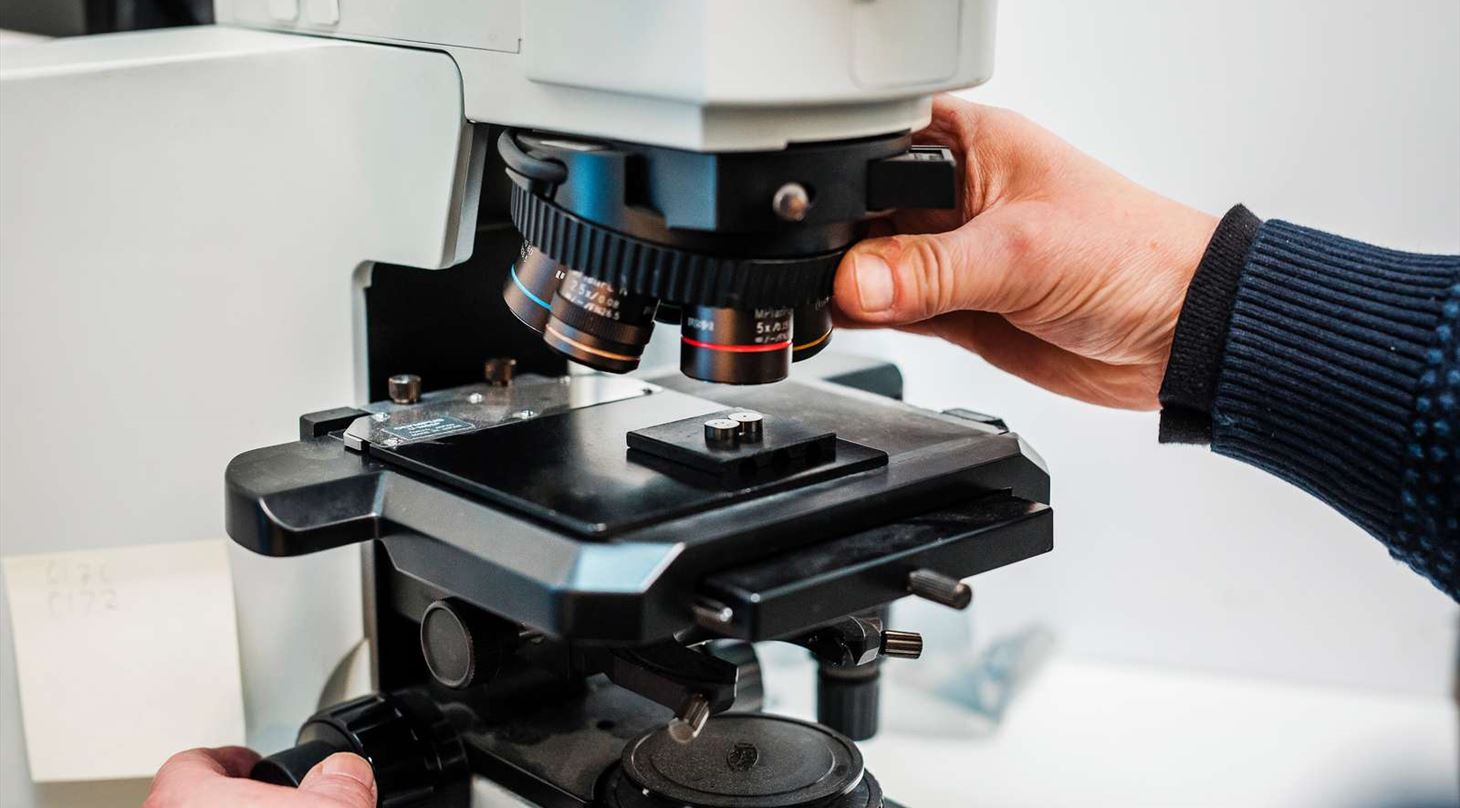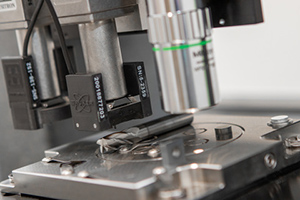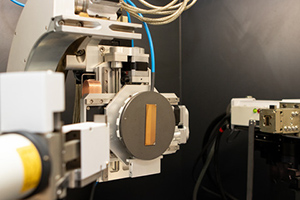
Analysis techniques
The high-tech techniques that we at the Danish Technological Institute use ourselves to analyze and develop our surface coatings, we can also offer as services for your products or surfaces.
Our selection of analysis techniques can provide unique insights into improvement potentials or opportunities for many different systems. We can help identify which technique(s) will be relevant for your specific situation.
Below you can see a selection of the techniques we use:
For physical properties
 Nanoindentation: An advanced technique used for precise measurement of the mechanical properties of surfaces, such as hardness and elastic modulus at the nanoscale. With our state-of-the-art nanoindenter from Bruker, we achieve highly accurate results, ideal for assessing the durability and strength of surfaces. This method is indispensable for understanding how coatings will behave under load and can help optimize their performance and lifespan.
Nanoindentation: An advanced technique used for precise measurement of the mechanical properties of surfaces, such as hardness and elastic modulus at the nanoscale. With our state-of-the-art nanoindenter from Bruker, we achieve highly accurate results, ideal for assessing the durability and strength of surfaces. This method is indispensable for understanding how coatings will behave under load and can help optimize their performance and lifespan.
Pin-on-disc: This test is used to evaluate the friction and wear properties of surfaces by simulating sliding contact between two materials. This method provides important information about wear resistance, which can help improve material selection or coatings.
Contact angle: A technique that examines the interaction of liquids with surfaces to determine hydrophobicity or hydrophilicity. The results can be used to optimize the surface, which is important for, for example, self-cleaning surfaces.
For surface structure and chemistry
Scanning Electron Microscopy (SEM): Enables imaging of the microstructure of a surface. SEM is essential for visualizing small details and textures in materials, which can reveal defects, morphology, and other important structural characteristics that determine surface properties.
Energy Dispersive X-ray Spectroscopy (EDX): An analytical technique used in conjunction with SEM to determine the chemical composition of materials. EDX can identify and quantify the elements present on a surface, making it possible to precisely analyze the surface’s chemical makeup. The technique is also well-suited for identifying impurities or defects, which you can read more about here.
Profilometer: Used to map the topography and roughness of surfaces with great accuracy. The technique can be used to find the thickness of coatings with high precision, and also for measuring stresses in coatings.
 Parallel Beam Grazing Incidence X-ray Diffractometer (XRD, GI-XRD): An X-ray diffraction technique used to analyze the crystal structure and phase of thin films. Our equipment is specially designed to focus the X-ray beam onto the surfaces and extract as much information as possible from the outermost hundreds of nanometers. The technique can also be used to study the texture and stress of surfaces, which can affect their performance.
Parallel Beam Grazing Incidence X-ray Diffractometer (XRD, GI-XRD): An X-ray diffraction technique used to analyze the crystal structure and phase of thin films. Our equipment is specially designed to focus the X-ray beam onto the surfaces and extract as much information as possible from the outermost hundreds of nanometers. The technique can also be used to study the texture and stress of surfaces, which can affect their performance.
Synchrotron X-ray Diffraction (SR-XRD): We use this in addition to GI-XRD when tasks require exceptional resolution or when we need to observe the development of surfaces over time. The highly intense X-rays from synchrotrons enable very high temporal resolution in structural measurements. Therefore, the technique is often used in experiments where it is necessary to observe a surface while it is being affected. Examples include coatings on cutting tools measured while in operation, observing thin films being formed in the coating process, or watching functional surfaces in electrolysis devices during operation.
Grazing Incidence - Pair Distribution Function (GI-PDF): A synchrotron technique used to identify small changes in the position and structure of individual atoms in surfaces. The technique can also be used for amorphous surface coatings, making it extremely powerful for understanding the atomic structure in all kinds of surfaces.